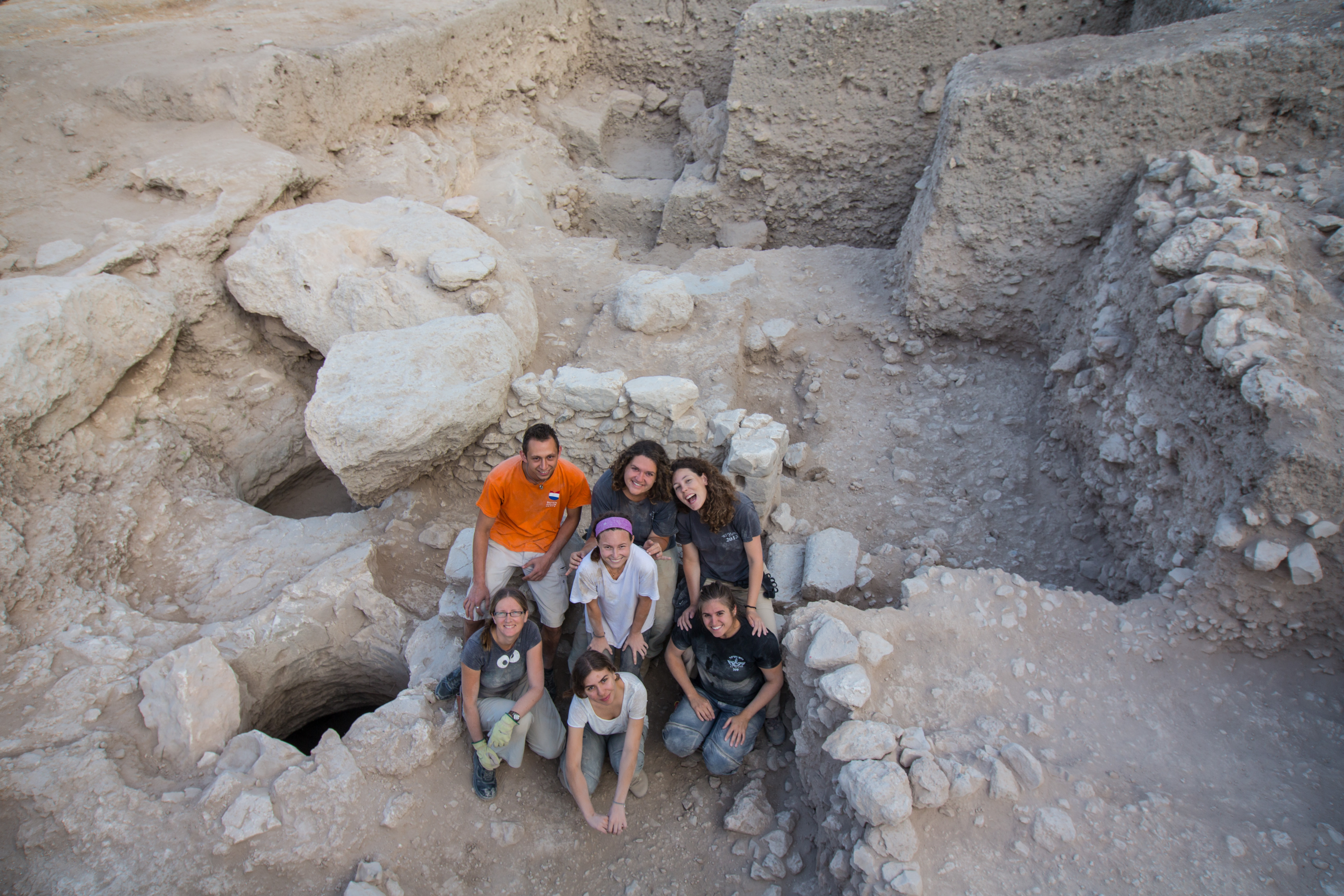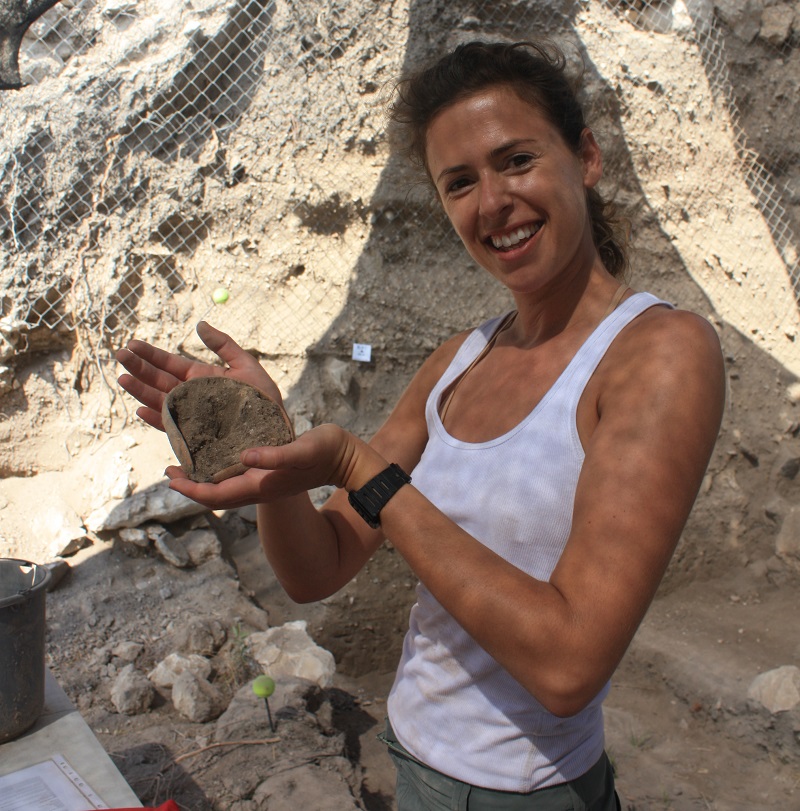Azekah
Photo by: Benjamin Sitzmann
Despite its rich, diverse and complex history, Azekah has stood relatively untouched until the first season of its current excavation in 2012.
Sitting 117 meters atop the rolling hills of the Judean lowlands (Shephelah), Azekah has played a central role in the ancient history of the region. At various times in antiquity the location stood as a key town and regional centre of the fertile plains of the Valley of Elah. For millennia Azekah flourished and grew, as its community benefited from Azekah’s rich natural and strategic location.
The biblical text references the area around Azekah as the arena for the battle between boy David and the giant Goliath (1 Samuel 17:1). Beyond its significance as a central Judean town, the site gains archaeological and historical importance from its destruction by the Assyrian King Sennacherib. Referenced in Assyrian texts, Sennacherib described the site as an ‘eagle’s nest … with towers that project to the sky like swords.’ Such evocative imagery, combined with the context of the text, constructs the site as a significant Judahite border-stronghold.

Photo by: Benjamin Sitzmann
According to Jeremiah 34:7, over a 100 years later during the Babylonian siege against Jerusalem, Lachish and Azekah “were the only fortified cities of Judah that remained”. The site is further referenced on ostracon uncovered at the nearby site of Lachish. Composed during Lachish’s period of capture by the Babylonians in 586 BCE, the text details the panic of seeing the lights of neighbouring tells wink out along the horizon as they were progressively captured and destroyed. Evocatively, the last line of the message, composed as a warning to Jerusalem of the encroaching threat reads:
“… for we cannot see any more, the fire-signals of Azekah”.
Azekah was destroyed by the Babylonian army in 586 BCE.
According to Nehemiah 11:30, Azekah was resettled by Judeans in the Persian period, and remained part of the Province of Judah in the Ptolemaic period.
Yet despite multiple destructions, the history of the site continues during the Hasmonean period. Perched at the top of the mound sits an impressive fortress built by the great Hasmonean King, John Hyrcanus I.
Azekah continued to be populated in the Hellenistic, Roman and Byzantine periods, when it was listed in the Madaba map as Beit Zechariah. The title of the Tel was preserved in the name of the nearby Arab village, as well as in today’s Moshav Zekhariah.
Tell Zakariya was one of the first sites to be excavated in the holy land. The fortress stood undiscovered until the late 19th century when a small team of British archaeologists briefly excavated the site between 1898‒1899 (to Bliss and Macalister’s excavation). Led by F.J. Bliss and assisted by R.A.S. Macalister (on behalf of the Palestine Exploration Fund), the excavation was brief and, due to restrictions of the time, the team was forced to backfill their project.
Almost a hundred years later, in 2012 a team of archaeologists led by Tel Aviv and Heidelberg University returned to Tel Azekah. A team of directors that include Professor Oded Lipschits, Professor Manfred Oeming and Dr Yuval Gadot, supervise the current excavation of the site.
Blogs:
|
Without a doubt, the highlight of my year studying in the International MA program was |
 |
Part of TAU’s International MA Program in Archaeology is a 4-week excavation.
This year the two options for excavations were Tel Megiddo and Tel Azekah. Each excavation was 4 weeks long, with Megiddo running from mid-June into July and Azekah from mid-July to August. Both are very famous excavations, with over one hundred participants attending them each excavation season. |

